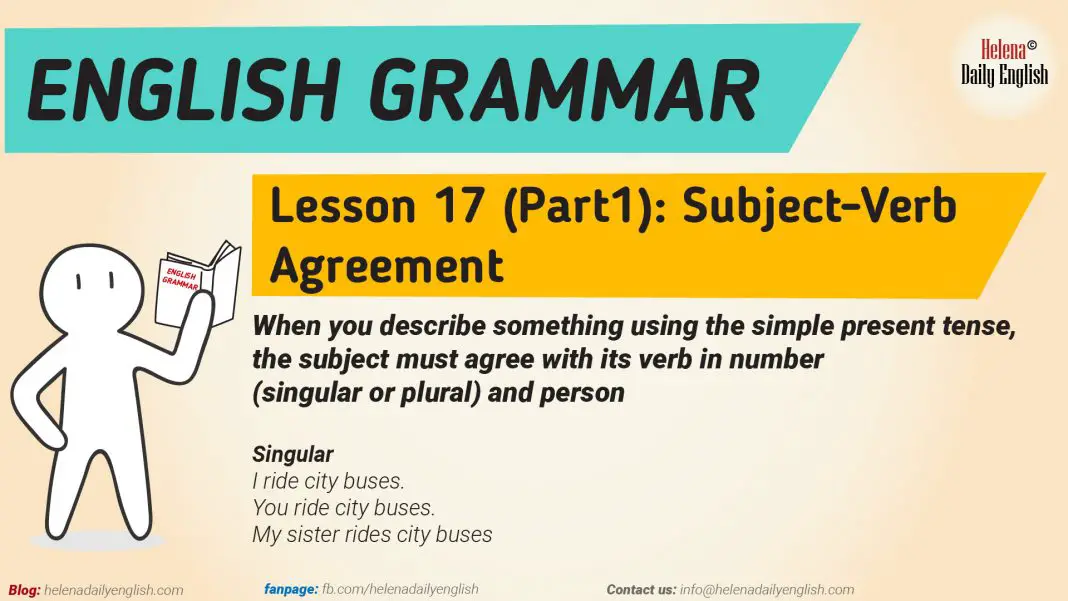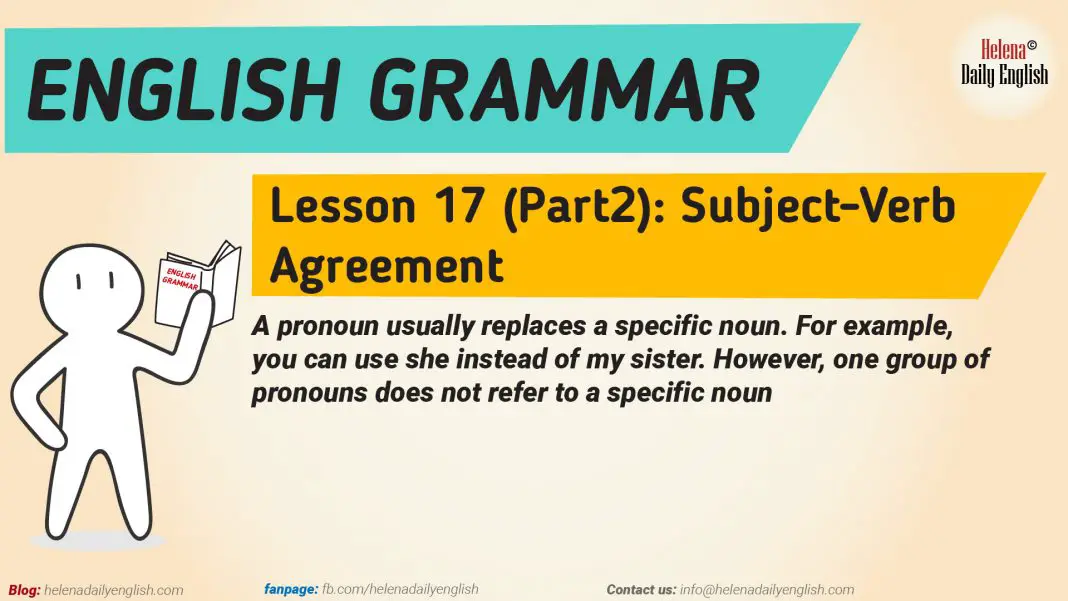Learn English Grammar: Lesson 17 (Part 1) – Subject-Verb Agreement
-
Subject-Verb Agreement: Present Tense Verbs
When you describe something using the simple present tense, the subject must agree with its verb in number (singular or plural) and person.
Singular
- I ride city buses.
- You ride city buses.
- My sister rides city buses.
Plural
- We ride city buses.
- You ride city buses.
- My brother and my sister ride city buses.
2. Subject-Verb Agreement: Negative Verbs
When you want to express a negative thought in the present tense, you must add the helping verb do or does (plus the negative not) to sentences that do not already have a helping verb.
Do not use do or does when the main verb is be.
- Singular (positive): My sister rides city buses.
- Singular (negative): My sister does not ride city buses.
- Plural (positive): My brothers live in New York City.
- Plural (negative): My brothers do not live in New York City.
When you use the third person singular in the negative, you must use does not (doesn’t). All other forms use do not (don’t).
In formal writing, it is best not to use contractions (doesn’t or don’t).
In the negative form, use does; never put -s on the main verb.
- Incorrect: My sister does not rides, city buses.
- Incorrect: My sister do not rides, city buses.
- Incorrect: My sister no rides city buses.
- Correct: My sister does not ride city buses.
3. Subject-Verb Agreement: With be (present tense)
Sentences that contain be in the present tense use the following forms:
|
Here are the forms for negative sentences:
| Person | Singular | Plural |
| First | I am not a college student. | We are not (aren’t) college students |
| Second | You are not (aren’t) a college student. | You are not (aren’t) college students. |
| Third | He is not (isn’t) a college student. | They are not (aren’t) college students. |
4. Subject-Verb Agreement: With be (past tense)
| Sentences that contain be in the past tense use the following forms: | ||
| Person | Singular | Plural |
| First | I was in class yesterday. | We were in class yesterday. |
| Second | You were in class yesterday. | You were in class yesterday. |
| Third | She was in class yesterday. | They were in class yesterday. |
| Here are the forms for negative sentences: | ||
| Person | Singular | Plural |
| First | I was not (wasn’t) in class yesterday. | We were not (weren’t) in class yesterday. |
| Second | You were not (weren’t) in class yesterday. | You were not (weren’t) in class yesterday. |
| Third | She was not (wasn’t) in class yesterday. | They were not (weren’t) in class yesterday. |
Learn English Grammar: Lesson 17 (Part 2) – Subject-Verb Agreement





